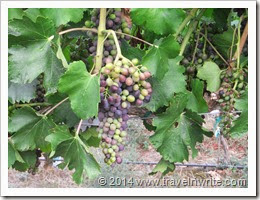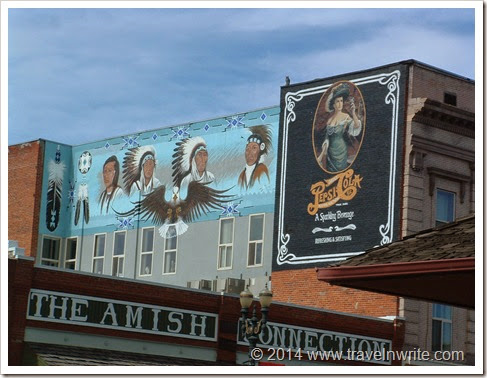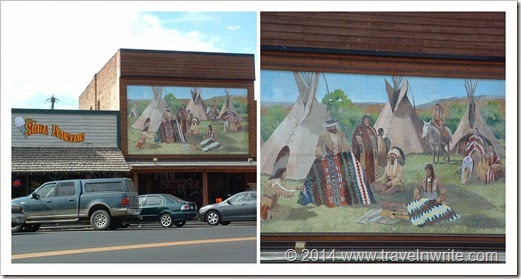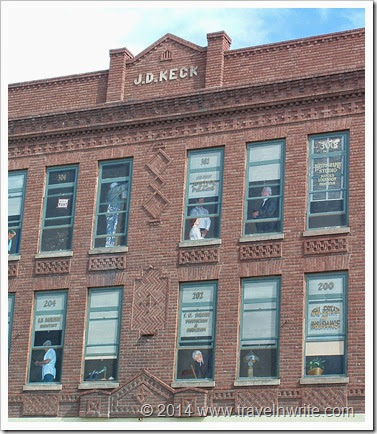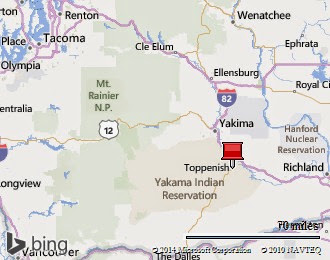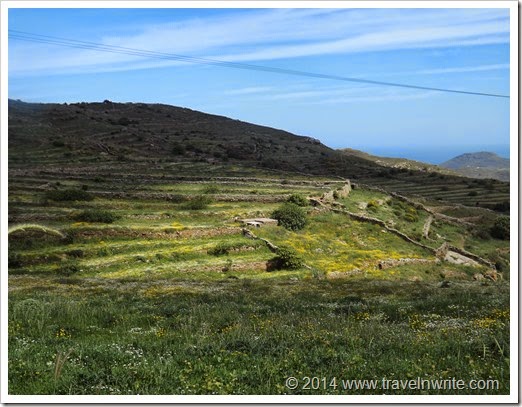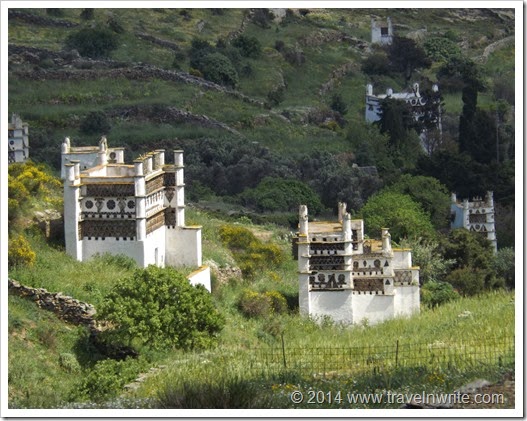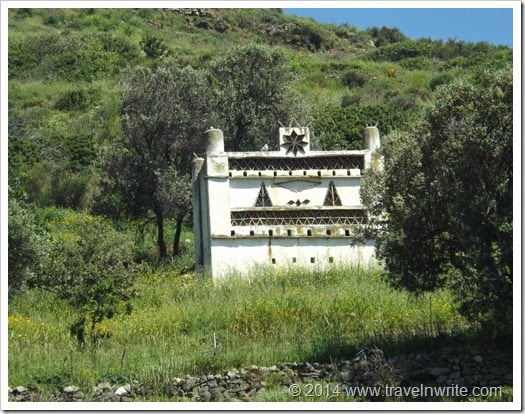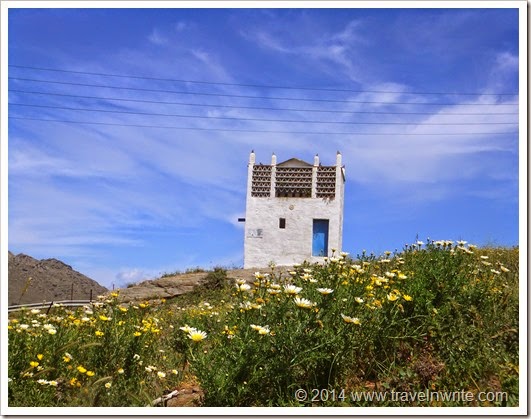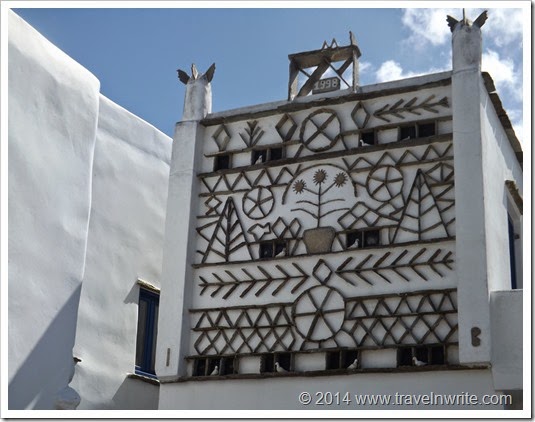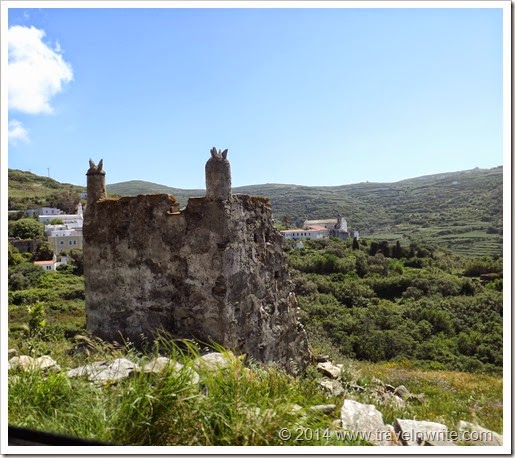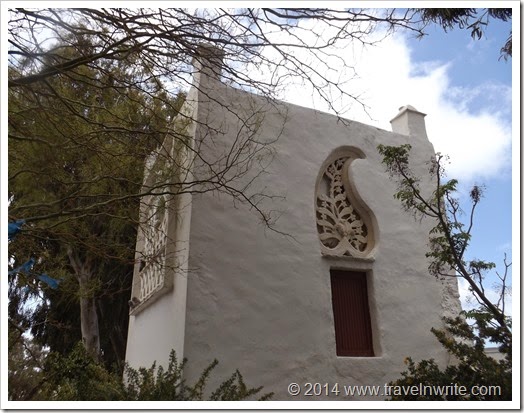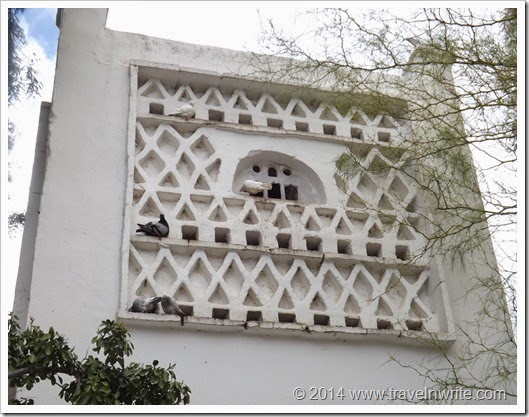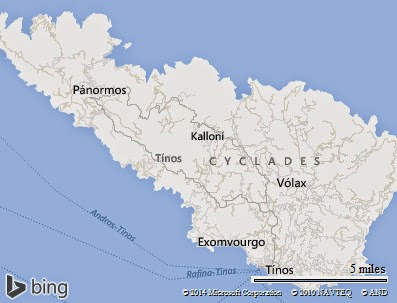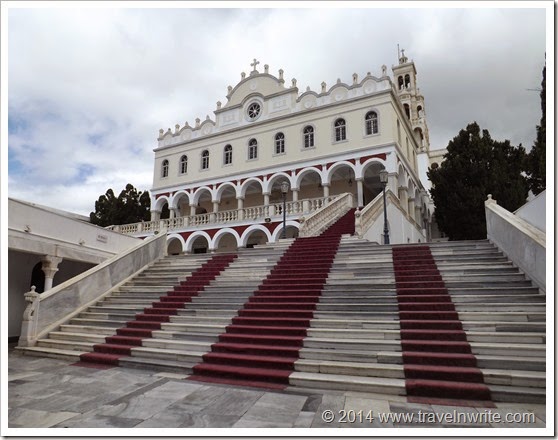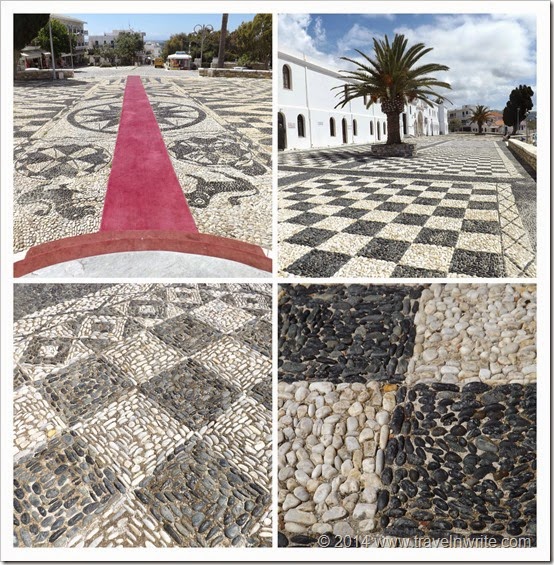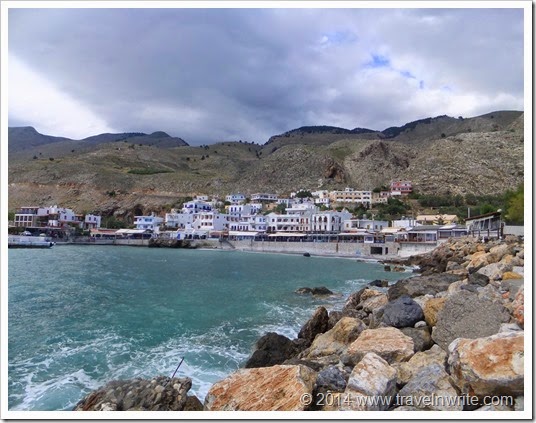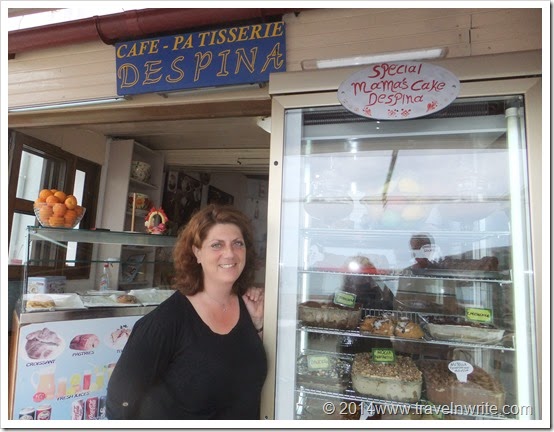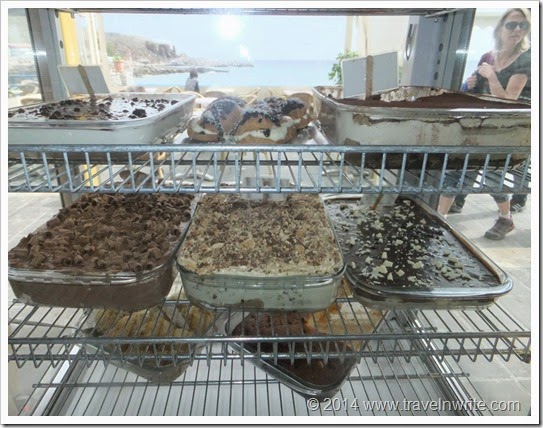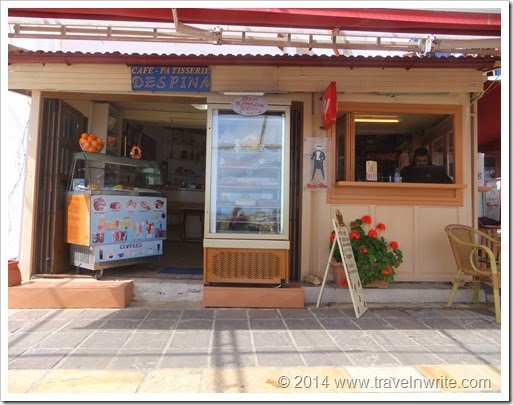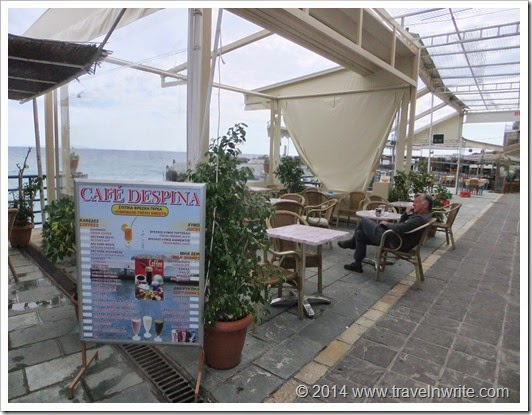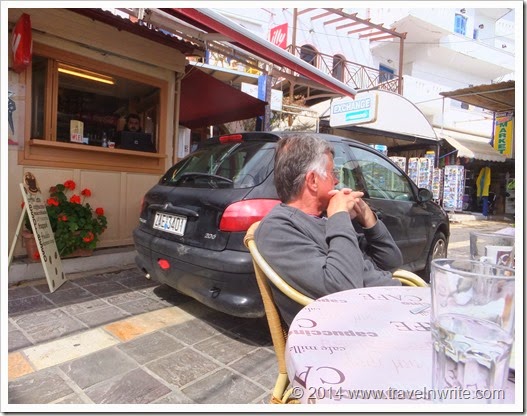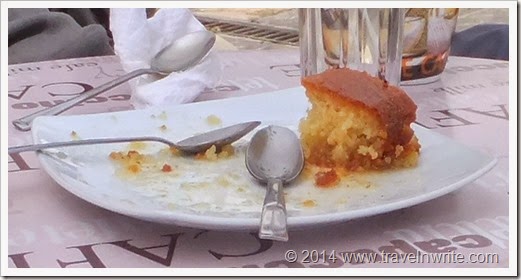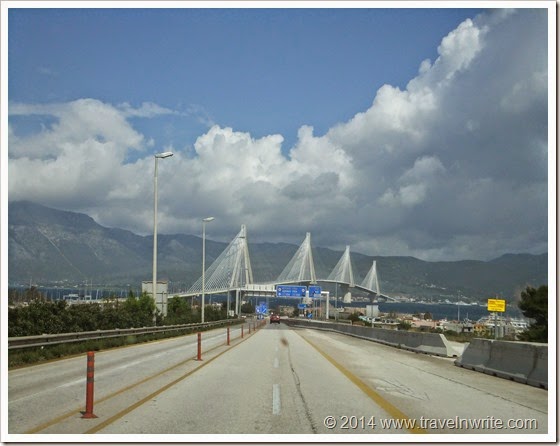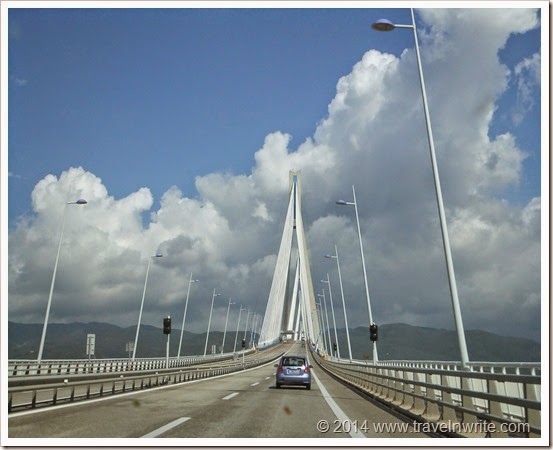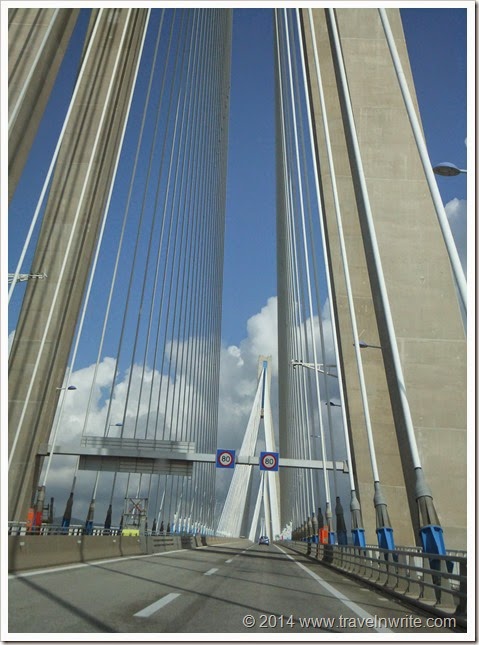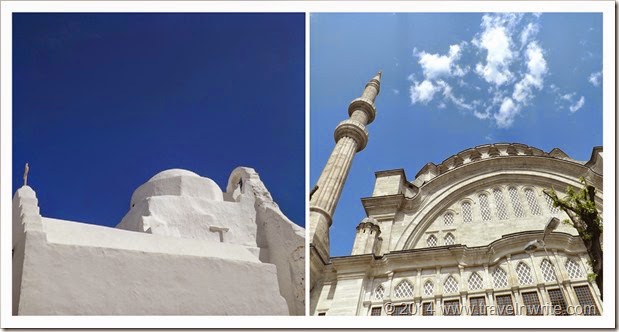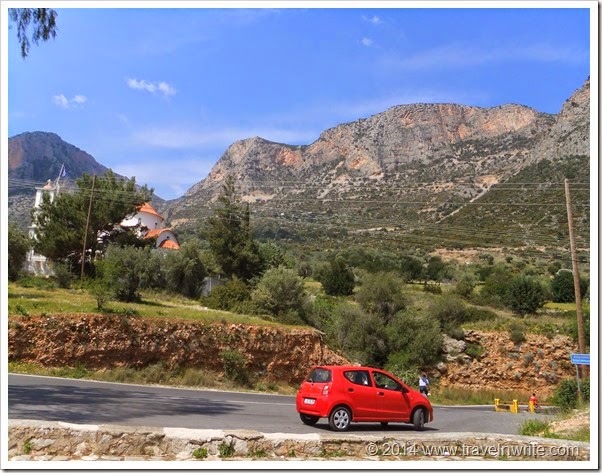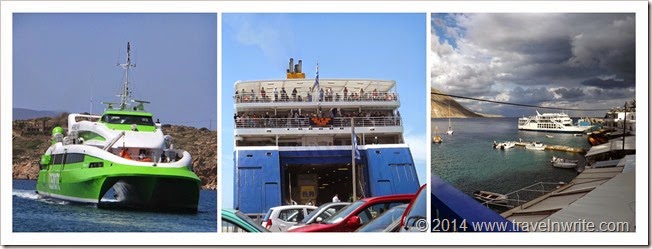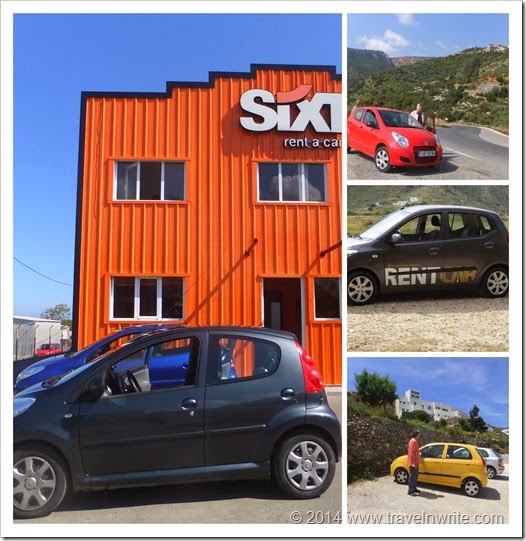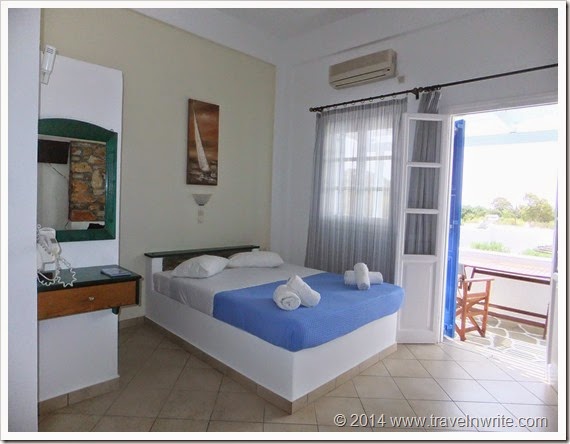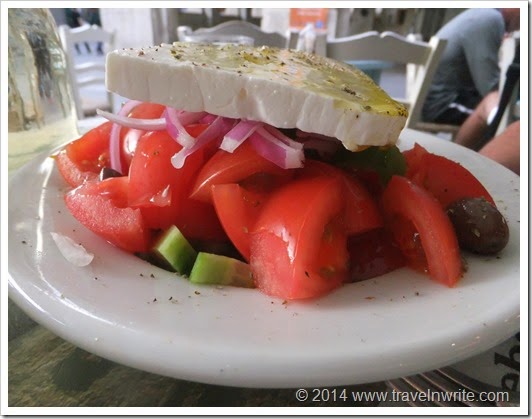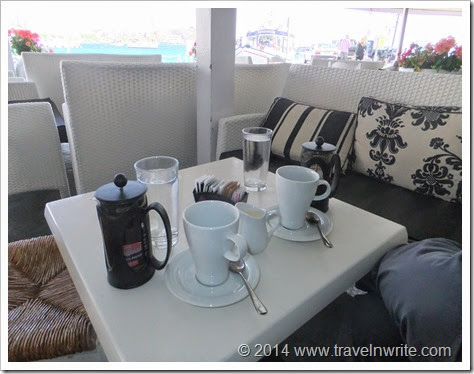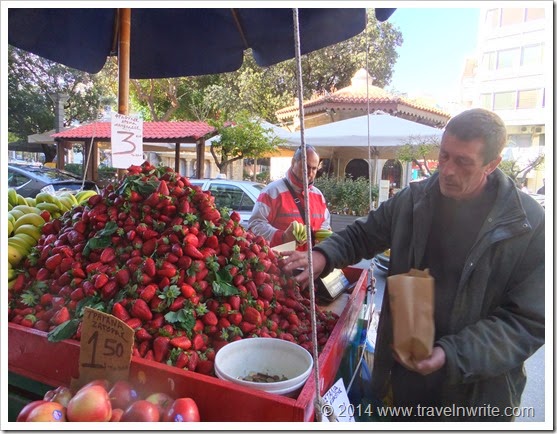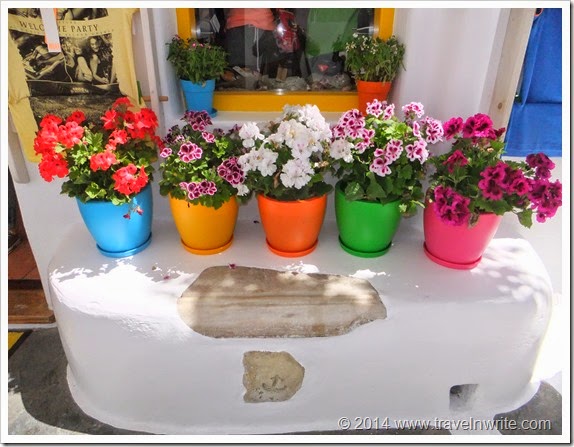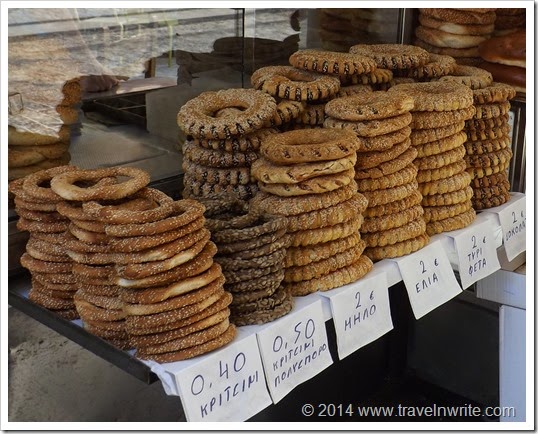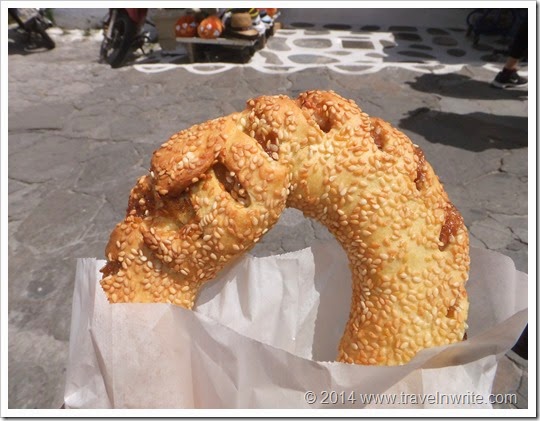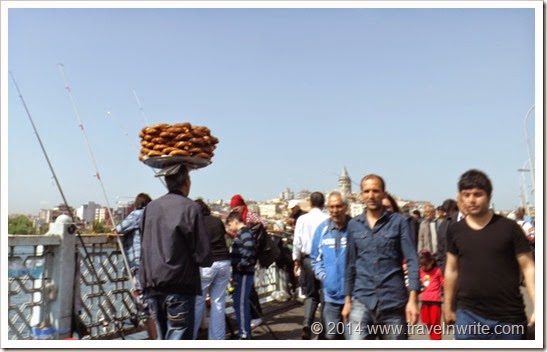The magenta-colored carpet we were looking for was more a dirty tan.
But it was there, just as we had been told it would be. Stretching a half-mile uphill from the harbor in Tinos town – on the Cycladic Island of the same name – it provides a cushion, of sorts, for those humble pilgrims who crawl to the church at the end of this holy pathway.
Not just any church, mind you, but to the island’s centerpiece, the
Holy Church of Panagia Evaggelistria of Tinos, or Our Lady of Tinos.
Panagia is the Eastern Orthodox title for the Virgin Mary. Evaggelistra, refers to the Annunciation when the angel Gabriel announced to Virgin Mary the incarnation of Christ.
More than a million faithful each year come to this island with a population of about 8,500 to seek blessings, healing, or miracles (all of which have been recorded as having been granted over the decades) from the
Megalochari, (
Great Grace), the unofficial name of the Holy Icon for which the church is home.
Unlike those faithful, we chose to walk to the church which gave us an opportunity to ’window shop’ at the many stores that line the route selling religious souvenirs. Others sell candles – huge candles as evidenced by their size in the photo below – to be use as offerings. They also sell ‘
tamas’ metallic pieces that represent the reason for your visit. We’ve seen similar metallic pieces called
‘milagros’ or ‘miracles’ in Spanish offered at cathedrals in Mexico.
Why this Church is Special:
It’s believed that in ancient times, a temple to the Greek god, Dionysus, once stood on the site of the present-day church; a church considered to be one of the most important orthodox shrines of pilgrimages in Greece. But somewhere along the ages, the Christians came along and turned it into a church.
What makes the story more interesting is that the
Megalochari which came to Tinos during the Byzantine times, is believed to have been one of three icons painted by Saint Luke during the lifetime of the Virgin Mary. . .many believe it’s miracle-working power came directly from her blessing it.
But the icon vanished when Saracen pirates invaded and burned down the church – back in the 10th Century.
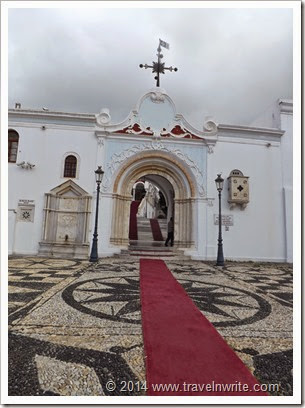
It wasn’t found until some 900 years later after a nun named Pelagia, had three recurring visions about its location and convinced townsfolk of where they needed to dig to find it.
They dug, found evidence of the temple, but no icon, so they quit digging.
Then a cholera epidemic hit.
Was it cause and effect?
Whatever the case, they resumed the digging and found the
Megalochari on Jan. 30, 1823.
Sister Pelagia became Saint Pelagia in 1970.
At the bottom level of the church there are three vaulted arcades where the icon was believed to have been found. It is the site of many baptisms.
The church is a financially independent charitable foundation, governed by a 10-member committee made up of nine elected directors and the Bishop of Syros-Tinos. It is operated separate from the other Greek Orthodox churches and monasteries in Greece. It’s support comes from donations and offerings of the faithful – it is the donated works of art that fill the church’s museum and then some.
Photos are not permitted inside the church or of the hallways that lead to offices and the church museum, or apartments (which are used – free of charge – at three-day intervals by pilgrims). So I was left to photograph the intricate mosaic that makes up the church’s courtyard.
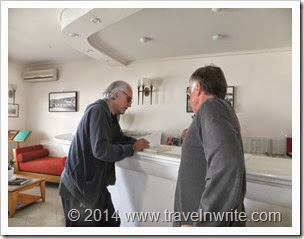
We spent three nights in Tinos as a result of some of that ‘novel research’ I am always promoting.
You know we are both fans and friends of Jeffrey Siger who spends half of each year on Mykonos writing crime novels set in Greece. His, “Target Tinos” with a plot-line involving this church had peaked our interest in the island.
And as we pondered our ‘next stop’ while in Mykonos, he was kind enough to give us a wealth of travel tips about Tinos.
We set off for Tinos aboard a ferry from Mykonos. Water is the only way to reach this island, which in retrospect, was the most ‘Greek’ of the islands we visited. By that, I mean we encountered many who spoke as much English as we do Greek. We were fortunate to be there during the off season and in fact, were but a few staying in the multi-storied hotel we'd selected on the water front.
It was also one of the most stunning Greek islands we’ve visited. The countryside was magical ~ We’ll take you on a tour of it soon.
That’s it for today’s
Travel Photo Thursday. Head over to
Budget Travelers Sandbox for more armchair travels. And if you want to do some novel research on Greece, check out Jeff’s book:

Hope to see you back here later this week. And, as always, thanks for the time you spent with us today!
Also linking to:
Travel Photo Monday
Monday Mosaics

